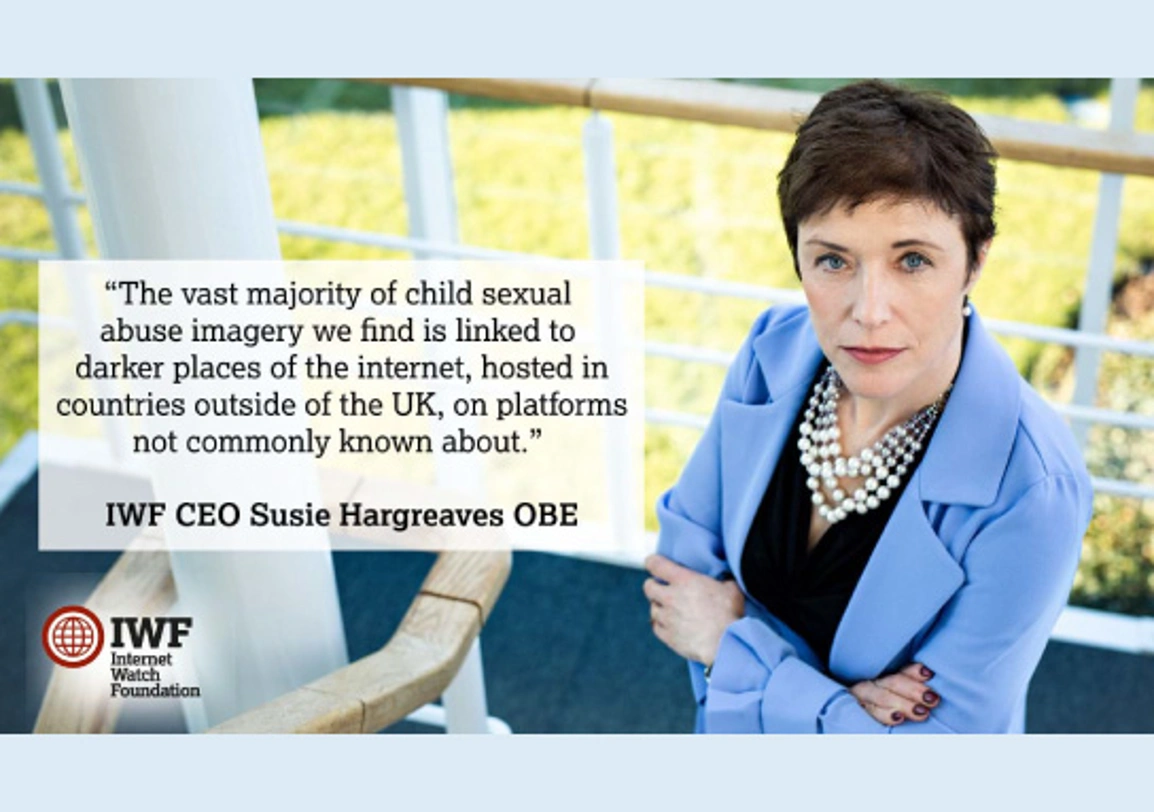
AI becoming ‘child sexual abuse machine’ adding to ‘dangerous’ record levels of online abuse, IWF warns
‘Frightening’ 260-fold rise in AI child sexual abuse videos contribute to making 2025 worst year for online abuse in IWF’s 30-year history.

Published: Thu 7 Nov 2019
IWF has published a selection of data which shows the number of child sexual abuse URLs (webpages) found on different platforms online. It is in response to an enquiry by the Daily Telegraph which requested figures on the number of child sexual abuse URLs found on a selection of popular online platforms. The sample of platforms chosen by the Daily Telegraph does not take into account all social networks, search engines or cloud hosting sites, however.
IWF CEO Susie Hargreaves OBE, said: “The IWF secures the removal of millions of images and videos showing the sexual abuse of children from the open internet and we’re proud of the work we do protecting children from a lifetime of suffering.
“The vast majority of child sexual abuse imagery we find is linked to darker places of the internet, hosted in countries outside of the UK, on platforms not commonly known about.
“We know that people who collate and hide this material want cheap hosting space, with easy access and a reliable ‘service’ which doesn’t take a tough approach to criminal content.
“It’s a bit of a myth that all of this content is hosted on social networks; of the 105,047 URLs we identified showing child sexual abuse material last year, just half a percent (0.5%) were hosted on social media sites. It’s important to recognise, however, that IWF operates on the open internet, not on messaging services like Facebook Messenger or WhatsApp which are person-to-person communications.
“Just knowing the platforms where we’ve found content isn’t necessarily a good indication of how the imagery was created or where the dangers are to children and young people. But we would like to give people meaningful data about how child sexual abuse material is being made available on the internet where we can.
“We are therefore having discussions with our Members and other key stakeholders about how to do this best as part of the broader conversation around the online harms white paper.
“We clearly cannot publish a full list of where we find child sexual abuse imagery as this would be tantamount to revealing to offenders the best places to hide it. However, it’s important to note that law enforcement agencies around the world are always made aware of the platforms in question when child sexual abuse material is found, and steps are taken to remove the imagery.”
In 2018 image hosting sites represented 82% of all child sexual abuse imagery identified by IWF.
The top 10 most abused site types
| Site type | No of reports 2018 | % | No of reports 2017 | % |
|---|---|---|---|---|
Image host |
86,197 |
82% |
54,539 |
69% |
| Cyberlocker | 5,074 | 5% | 11,223 | 14% |
| Banner site | 4,558 | 4% | 5,712 | 7% |
| Blog | 3,270 | 3% | 827 | 1% |
| Website | 1,265 | 1% | 1,091 | 1% |
| Forum | 1,190 | 1% | 1,984 | 3% |
| Search provider | 818 | <1% | 297 | <1% |
| Image board | 783 | <1% | 752 | 1% |
| Video channel | 772 | <1% | 587 | 1% |
| Social networking site | 530 | <1% | 695 | 1% |
The top five hosting companies where IWF identified child sexual abuse material:
|
Hostname Analysis* 2016 |
Total number of confirmed child sexual abuse URLs 2016 |
Hostname Analysis* 2017 |
Total number of confirmed child sexual abuse URLs 2017 |
Hostname Analysis* 2018 |
Total number of confirmed child sexual abuse URLs 2018 |
|---|---|---|---|---|---|
| Image host A | 8,217 | Image host A | 11,132 | Image host B | 7,198 |
| Image host F | 4,237 | Image host G | 5,451 | Image host C | 6,833 |
| Image host H | 3,678 | Image host D | 3,616 | Image host E | 5,992 |
| Image host I | 2,425 | Image host B | 3,125 | Image host J | 4,224 |
| Image host K | 2,180 | Image host L | 2,413 | Image host K | 3,972 |
*The platform name has been changed to not reveal to offenders the popular services for hosting and sharing child sexual abuse imagery. IWF is also aware of on-going police investigations with some of these platforms.
| Platform / number of confirmed child sexual abuse URLs by year (alphabetical order) | 2016 | 2017 | 2018 |
|---|---|---|---|
| Amazon | 161 | 166 | 48 |
| Bing | 42 | 81 | 481 |
| 24 | 35 | 13 | |
| 70 | 182 | 96 | |
| 0 | 14 | 4 | |
| 0 | 0 | 0 | |
| 0 | 0 | 0 | |
| 439 | 528 | 429 | |
| Snapchat | 0 | 0 | 0 |
| YouTube | 6 | 10 | 6 |
Notes:

‘Frightening’ 260-fold rise in AI child sexual abuse videos contribute to making 2025 worst year for online abuse in IWF’s 30-year history.